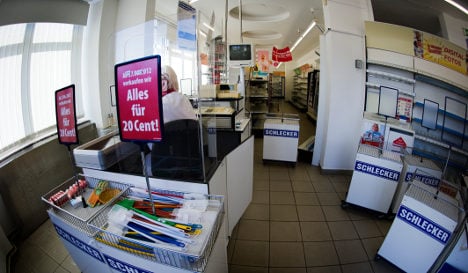But while the bankrupt company’s remaining 13,200 workers will now report to the unemployment office, massive questions remain unanswered about what company founder Anton Schlecker has done with his money.
The Bild newspaper on Wednesday said Schlecker signed over ownership of real estate with a value of several million euros to his wife and two children just months before filing for bankruptcy. The paper based its reporting on contracts and land registry information.
Those administering the Schlecker bankruptcy refused to comment, Bild said. “All transactions, especially those from the last four years, will be scrutinized,” one said.
The Verdi trade union, which represents the chain’s workers, said it expected bankruptcy administrators to do everything they can to get illegal transfers back. This money was important for the severance package for workers, it said.
But there will not be much to be had based from what is left in the stores, bankruptcy expert Detlef Specovius said. “The company doesn’t own 100 percent of the goods. The stores are rented,” he said.
Schlecker was once Germany’s largest drugstore chain, with 14,000 stores in Europe, more than 50,000 workers and annual sales of €7 billion, the Süddeutsche Zeitung newspaper reported on Wednesday.
The company filed for bankruptcy in January. Experts say it expanded too rapidly into unprofitable locations in eastern Germany and customers were drawn to competing chains DM and Rossmann.
Wednesday’s last-day sale put all Schlecker items at 20 cents – but customers at a store on the outskirts of Munich grumbled about not finding a bigger choice of items on the store’s last day, the Süddeutsche Zeitung said.
A small chink of hope remained with the possible sell-off of Schlecker subsidiary Ihr Platz.
An Austrian and a Munich-based investor are both interested in the company, bankruptcy administrator Werner Schneider said. He said he was “cautiously optimistic” of being able to sell it and another Schlecker subsidiary, Schlecker-XL.
DPA/DAPD/The Local/mw



 Please whitelist us to continue reading.
Please whitelist us to continue reading.
Member comments